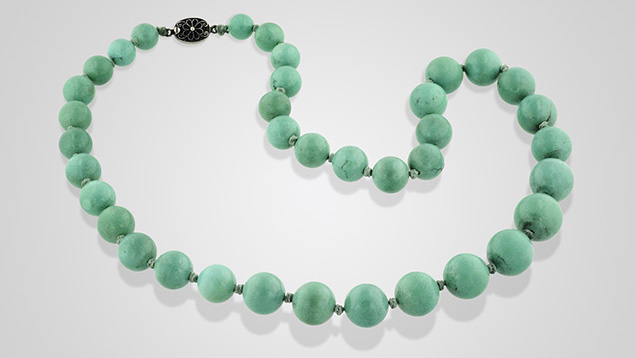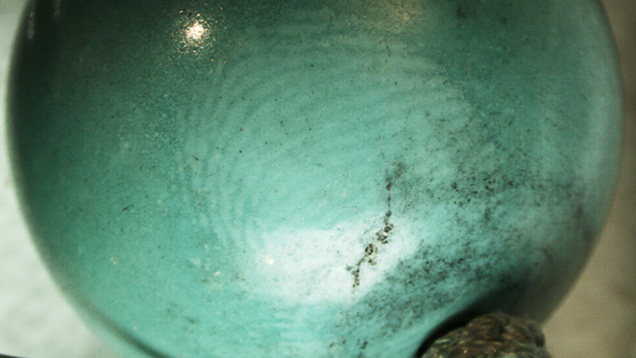Turquoise with Fingerprint Pattern


Figure 2. The light area shows a discoloration in the form of a fingerprint pattern. Photo by Nathan Renfro.
Untreated turquoise is porous and often absorbs skin oils and other contaminants, making the color more greenish. As a result, turquoise is commonly treated to enhance its appearance and protect it from discoloration. Most of the product on the market, especially lower-quality material, has been wax- or polymer-impregnated to improve its durability (S.F. McClure et al., “Gemstone enhancement and its detection in the 2000s,” Fall 2010 G&G, pp. 218–240).This interesting piece serves as a useful example of why turquoise is routinely treated. Simply handling it can affect the color and appearance over time, as illustrated by the fingerprint pattern preserved in this piece.



